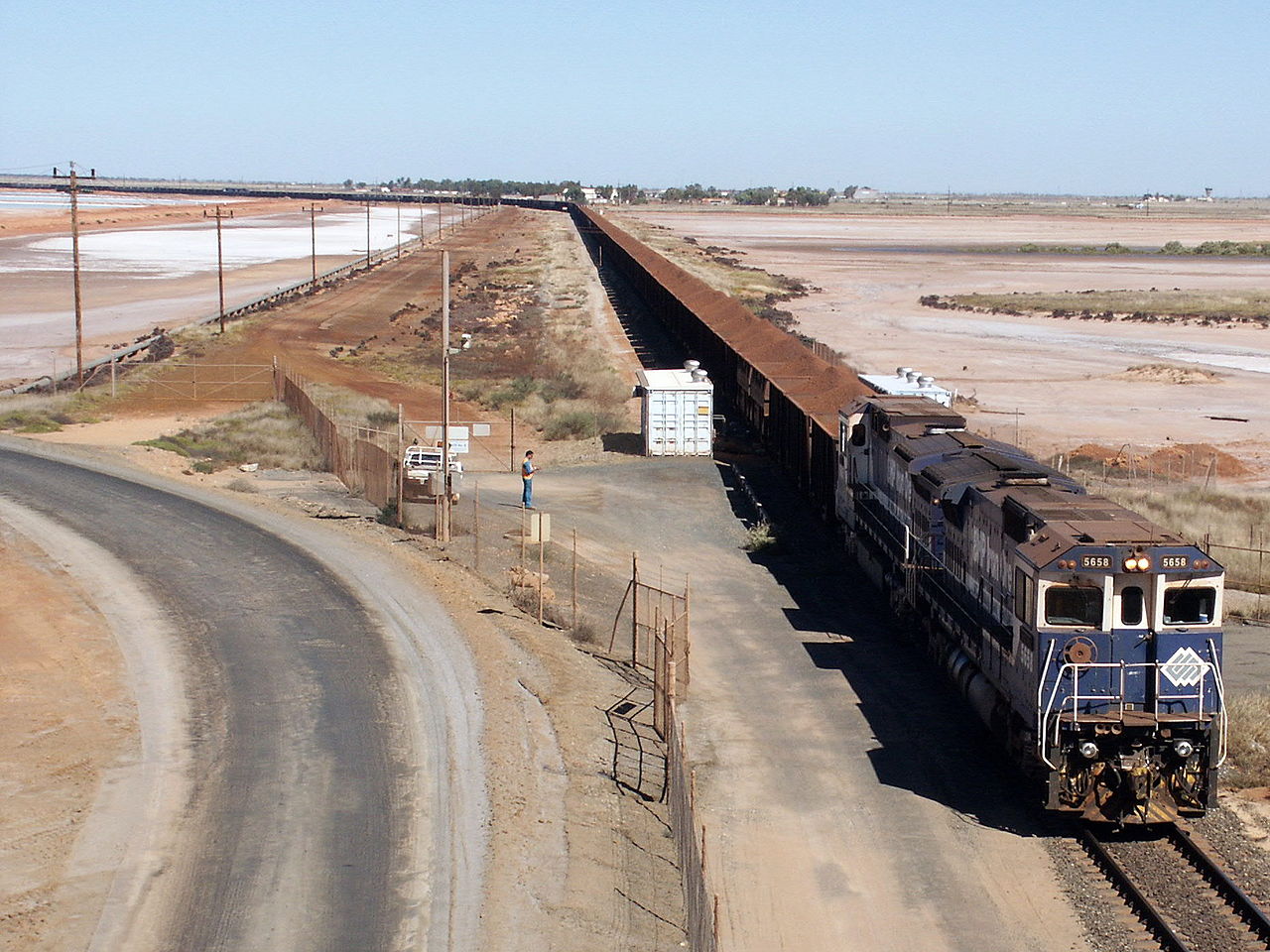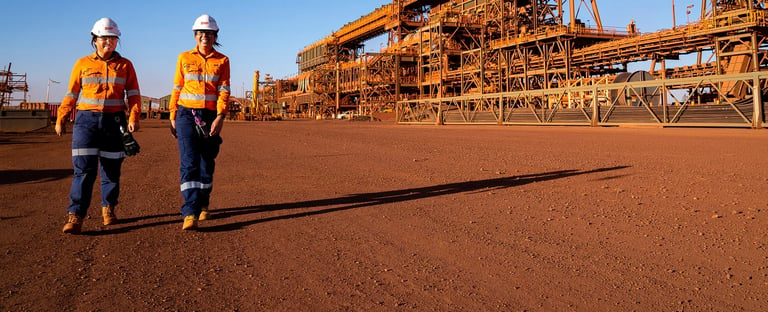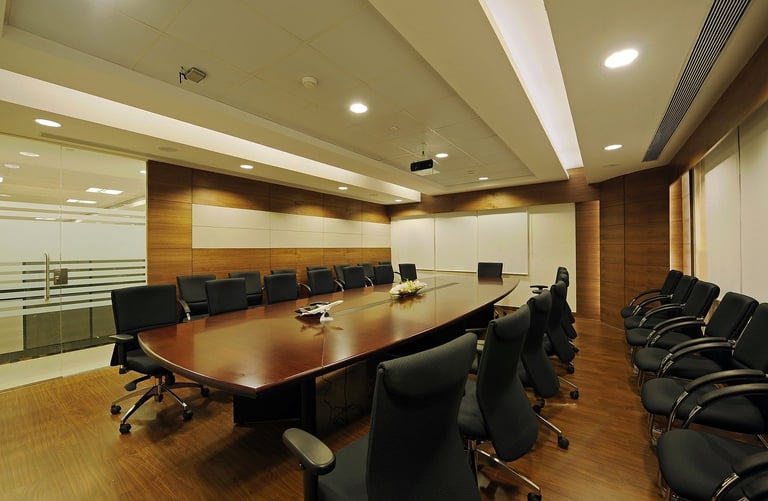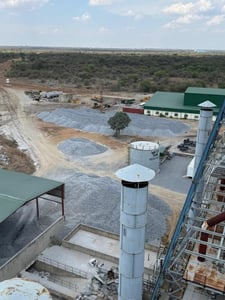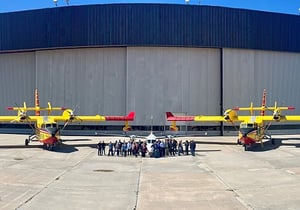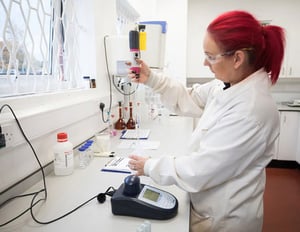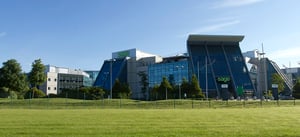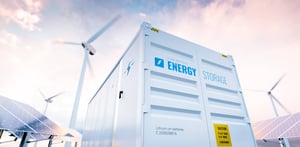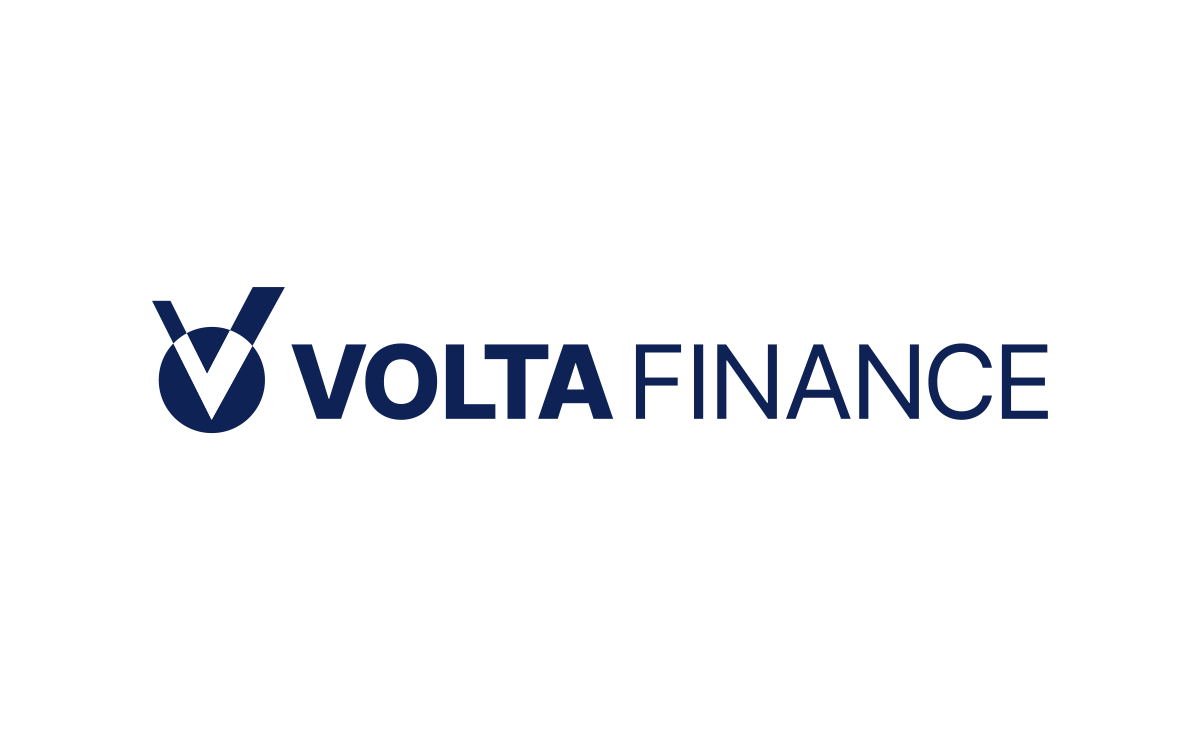BHP Group plc (LON:BHP) has announced its results for the half year ended 31 December 2020.
Keeping our people and communities safe
· There were no fatalities at our operated assets over the last two years.
· Our focus on safety, health and wellbeing has enabled us to deliver strong safety and operational performance.
Maximise cash flow: Strong operational performance and free cash flow generation, with a margin of 59%
· Strong underlying operational performance, with record production achieved at Western Australia Iron Ore (WAIO) and record average concentrator throughput delivered at Escondida.
· Profit from operations of US$9.8 billion, up 17%. Underlying EBITDA(i) of US$14.7 billion at a margin(i) of 59%, with full year unit cost guidance unchanged for our major assets (at guidance exchange rates(ii)).
· Attributable profit of US$3.9 billion (includes an exceptional loss of US$2.2 billion predominantly related to the impairments of New South Wales Energy Coal (NSWEC) and associated deferred tax assets, and Cerrejón). Underlying attributable profit(i) of US$6.0 billion up 16% from the prior period.
· Net operating cash flow of US$9.4 billion and free cash flow(i) of US$5.2 billion reflects higher iron ore and copper prices and strong operational performance.
Capital discipline: Spence Growth Option delivered on time and budget, and our balance sheet remains strong
· Capital and exploration expenditure(i) of US$3.6 billion. Guidance for the 2021 financial year has increased by US$0.3 billion to US$7.3 billion due to a stronger Australian dollar. Guidance for the 2022 financial year remains unchanged at approximately US$8.5 billion (at guidance exchange rates).
· Our four major projects under development are progressing well, with first production achieved from the Spence Growth Option (SGO) on time and budget in December 2020. South Flank is on track to deliver first production by mid-calendar year 2021, and remains on budget.
· In petroleum, we completed the acquisition of an additional 28% interest in Shenzi, a tier one asset with optionality.
· In exploration, we continue to add to our early stage optionality in future facing commodities, with a signed agreement for nickel exploration in Canada and an Option Agreement for the Elliott Copper Project in Australia.
· Our balance sheet is strong with net debt(i) of US$11.8 billion, following strong free cash flow generation throughout the period.
Value and returns: Record half year dividend of US$1.01 per share and ROCE up to 24%
· The Board has determined to pay an interim dividend of US$1.01 per share (or US$5.1 billion), equivalent to an
85% payout ratio on an underlying basis.
· The divestment process for our interests in BHP Mitsui Coal (BMC), NSWEC and Cerrejón is progressing, with extensive due diligence being undertaken to assess both demerger and trade sale opportunities.
· Underlying return on capital employed(i) strengthened further to 24%.
| Half year ended 31 December | 2020US$M | 2019US$M | Change% |
| Profit from operations | 9,750 | 8,314 | 17% |
| Attributable profit | 3,876 | 4,868 | (20%) |
| Basic earnings per share (cents) | 76.6 | 96.3 | (20%) |
| Interim dividend per share (cents) | 101.0 | 65.0 | 55% |
| Net operating cash flow | 9,369 | 7,442 | 26% |
| Capital and exploration expenditure | 3,614 | 3,795 | (5%) |
| Net debt | 11,839 | 12,679 | (7%) |
| Underlying EBITDA | 14,680 | 12,084 | 21% |
| Underlying attributable profit | 6,036 | 5,186 | 16% |
| Underlying basic earnings per share (cents)(i) | 119.4 | 102.6 | 16% |
Results for the half year ended 31 December 2020
BHP Chief Executive Officer, Mike Henry:
“BHP has delivered a strong set of results for the first half of the 2021 financial year.
Our continued delivery of reliable operational performance during the half supported record production at Western Australia Iron Ore and record concentrator throughput at Escondida.
Our operations generated robust cash flows, return on capital employed increased to 24 per cent and our balance sheet remains strong with net debt at the bottom of our target range. The Board has announced a record half year dividend of US$1.01 per share, bringing BHP’s shareholder returns to more than US$30 billion over the past three years.
I am grateful to BHP employees and contractors for their resilience and unwavering resolve in the face of the pandemic, and for the continued support of the communities, suppliers, customers, governments and traditional owners. Their efforts have made this strong set of results possible.
We further grew value in the business during the half through achieving first production at the Spence Growth Option and through the acquisition of an additional interest in Shenzi. Our other major projects in iron ore, petroleum and potash are progressing to schedule.
Creating and securing more options in future facing commodities remains a priority. In nickel and copper, we established further new partnerships, acquired new tenements and progressed exploration.
Our outlook for global economic growth and commodity demand remains positive, with policymakers in key economies signalling a durable commitment to growth and signalling ambitions to tackle climate change. These factors, combined with population growth and rising living standards, are expected to drive continuing growth in demand for energy, metals and fertilisers.
Our leadership team is in place and accelerating our agenda to be safer, lower cost and more productive. We are well positioned, with a portfolio of essential products that will support a cleaner and more prosperous world while generating sustainable returns for our shareholders and value for our communities.”
Social value underpins everything we do
Safety and sustainability
Our priority is the safety, health and wellbeing of our workforce and the communities in which we operate and we have continued to demonstrate this throughout the COVID-19 pandemic. We have provided significant support to local businesses, and regional and Indigenous communities in our areas of operation in response to COVID-19 and we have established programs to support the public health response.
Our operated assets have continued to operate safely. We remain vigilant and will continue with social distancing and hygiene practices, and other additional protocols as appropriate to protect our workforce and communities from the spread of COVID-19, in line with guidelines from local and national government bodies and expert health advice in the countries where we operate. While many of these measures remain in place, our Australian operations have effectively managed the rapidly changing environment relating to interstate travel and border restrictions. In Chile, the operating environment is expected to remain challenging as COVID-19 cases in the country have risen materially in recent months, with reductions in our workforce forecast to remain substantial during the coming months.
Despite the challenges, our people have maintained their commitment to safety. Our global safety improvement programs are progressing well and our safety leading indicators have continued a strong positive trend underpinning the current safety performance. We have now had over two years without a fatality at our operated assets but retain a heightened awareness in the workplace to the risks.
Support for local communities and wider sustainability objectives remains a critical part of our social value contribution. Our community and social investment commitment, which began 20 years ago, is aligned with our broader business priorities and supports projects and provides donations with the primary purpose of contributing to the resilience of the communities and environment where we have a presence. As part of this investment, we also fund the BHP Foundation, which continues to work with partner organisations globally to address some of the world’s most critical sustainable development challenges. These efforts are designed to enhance the contribution that the global resources sector can make to achieve many of the United Nations Sustainable Development Goals, and they focus on the governance of natural resources, environmental resilience and education equity. Further information can be found at: bhp.com/foundation
Climate change
We have also continued to make good progress in addressing the urgent global challenge of climate change.
We are committed to continuing to reduce emissions in our operations and to our goal of achieving net zero operational emissions by 2050. Many of our operations are already at the lower-end of their respective emissions intensity curves reflecting our efforts to date. We are on track to meet our current short-term target to maintain 2022 financial year total operational emissions at or below 2017 levels, with agreements for renewable electricity use at Escondida and Spence commencing from 2022, as part of our aim to achieve 100 per cent renewable supply at both operations by the mid-2020s.
Our 2020 Climate Change Report, published on 10 September 2020, provided an update on our actions; our new climate commitments; and how we will integrate climate change into our corporate strategy and portfolio decisions. This included:
· setting a medium-term target to reduce our operational greenhouse gas (GHG) emissions (Scope 1 and Scope 2) by at least 30 per cent from 2020 levels by 2030, establishing the trajectory to achieve our 2050 goal of net-zero operational emissions;
· actions to address Scope 3 emissions to contribute to decarbonisation in our value chain;
· strengthening the link between executive remuneration and delivery of BHP’s climate plan; and
· providing insight into the performance of BHP’s portfolio in a transition to a 1.5°C scenario.
Acting on these commitments, in September 2020, BHP signed a renewable power purchasing agreement (PPA) to meet half of its electricity needs across its Queensland Coal mines from low emissions sources, including solar and wind. The agreement will help BHP reduce emissions from electricity use in its Queensland operations by 50 per cent by 2025, based on 2020 levels. We also executed a 15-year contract extension to our PPA at Nickel West which provides the additional ability to integrate renewable electricity generation, including solar and wind. Study phases for renewable energy supply and carbon emissions reduction under the extended PPA are under way and these projects have the potential to reduce Nickel West’s Scope 2 electricity GHG emissions by up to 15 per cent by 2023, based on 2020 levels.
To support decarbonisation of our industry, in September 2020, we awarded the world’s first LNG-fuelled bulk carrier tender, with the aim of reducing GHG emissions by 30 per cent per voyage, including virtually eliminating SOx (sulphur oxide) and NOx (nitrogen oxide) emissions. Following this, we awarded the first LNG bunkering agreement to Shell in December 2020.
In November 2020, we signed a memorandum of understanding (MOU) with world leading steel producer, China Baowu, with the intention to invest up to US$35 million and share technical knowledge to help address the challenge of reducing greenhouse gas emissions in the global steel industry. The five-year partnership will focus on the development of low carbon technologies such as hydrogen injection in the blast furnace, and pathways capable of emission intensity reduction in integrated steelmaking. Under the MOU, the deployment of carbon capture, utilisation and storage in the steel sector will also be investigated at one of China Baowu’s production facilities.
In February 2021, we also signed a MOU with a large Japanese steel producer, JFE, to jointly study technologies and pathways capable of making material reductions to greenhouse gas emissions from the integrated steelmaking process. The five-year partnership will focus on the role of our raw materials to increase efficiency and reduce emissions from the blast furnace and direct reduced iron (DRI) steel making routes. We have agreed to invest up to US$15 million over the five-year partnership, which builds on the strong history of technical research and collaboration between the two companies.
Over the course of last year, we developed and published our Global Climate Policy Standards, which are intended to provide greater clarity on how our policy positions on climate change should be reflected in our own advocacy and that of associations to which we belong, and announced key changes to our approach to industry associations. We will continue to advocate for action as BHP and in industry associations which have the capacity to play a key role in advancing the development of standards, best practices and constructive policy.
Key indicators scorecard
| Target | H1 FY21 | H2 FY20 | H1 FY20 | FY20 | Comment | |
| Fatalities | Zero work-related fatalities | 0 | 0 | 0 | 0 | No fatalities at our operated assets over the last 24 months. |
| High Potential Injury (HPI) frequency(iii) (per million hours worked) | Year-on-year improvement in HPI frequency | 0.20 | 0.14 | 0.32 | 0.24 | 17 per cent decrease from FY20. |
| TRIF(iii) (per million hours worked) | Year-on-year improvement in TRIF | 3.5 | 3.7 | 4.6 | 4.2 | 16 per cent reduction from FY20. |
| Operational greenhouse gas emissions(iii) (Mt CO2-e) | Maintain FY22 operational GHG emissions at or below FY17 levels(1) and reduce emissions by at least 30 per cent from FY20 levels(2) by FY30 | 8.1 | 7.9 | 7.9 | 15.8 | On track to meet our FY22 and FY30 targets with the reductions in emissions from renewable power contracts at Escondida, Spence, Queensland Coal and Nickel West. |
| Value chain emissions(iii) | Steelmaking: Goal to support industry to develop technologies and pathways capable of 30 per cent emissions intensity reduction(3) | | – | – | – | On track to deliver FY30 goal with MOU with China Baowu signed in H1 FY21 and MOU with JFE signed in H2 FY21. |
| Transportation: Goal to support 40 per cent emissions intensity reduction of BHP-chartered shipping of our products | | – | – | – | On track to deliver FY30 goal with award of a LNG-fuelled bulk carrier tender and LNG bunkering agreement in H1 FY21. | |
| Fresh water withdrawals(iii) (GL) | Reduce FY22 fresh water withdrawal by 15 per cent from FY17 levels(4) | 52.6 | 52.0 | 75.0 | 127.0 | On track to meet our five-year target. |
| Community and social investment (US$M) | No less than one per cent of pre‑tax profit (three-year rolling average) | 35.4 | 119.8 | 29.8 | 149.6 | 19 per cent increase on H1 FY20 due to continued community support for COVID-19 response and recovery in addition to planned community and social investment. |
| Local procurement spend(US$M) | Support the growth of local businesses in the regions where we operate | 947 | 972 | 949 | 1,922 | US$1.9 billion directed to local suppliers in each of the past two financial years. |
| Female workforce participation(iii) (%) | Aspirational goal for gender balance by CY25 | 27.4 | 26.5 | 24.8 | 26.5 | Nine percentage point increase from FY16, with 41 per cent female external hires in H1 FY21. |
| Indigenous workforce participation(iii) (%) | Australia: aim to achieve 8.0 per cent by the end of FY25(5) | 6.7 | 6.5 | 5.8 | 6.5 | Assets continue to focus on Indigenous employment, supported by 11.2 per cent representation in Operations Services. |
| Chile: increase representation from the previous financial year(6)(7) | 6.7 | 6.6 | 6.3 | 6.6 | Continued increase throughout H1 FY21. |
(1) In FY17, our operational GHG emissions were 14.6 Mt CO2-e (excluding Onshore US). Greenhouse gas emissions are subject to final sustainability assurance review.
(2) FY17 and FY20 baseline will be adjusted for any material acquisitions and divestments based on GHG emissions at the time of the transaction. Carbon offsets will be used as required. FY17 baseline is on a Continuing operations basis and has been adjusted for divestments.
(3) With widespread adoption expected post-2030.
(4) In FY17, our fresh water withdrawals were 156.1 GL (on an adjusted basis, excluding Onshore US).
(5) New medium term target established to achieve 8.0 per cent Aboriginal and Torres Strait Islander representation in our employee and contractor workforce by the end of FY25.
(6) Subject to verification of underlying data by the CONADI (National Indigenous Development Corporation).
(7) Work is underway to establish medium term targets for Indigenous workforce participation in Chile.
Samarco
BHP remains committed to supporting the Renova Foundation and its work to progress the remediation and compensatory programs to restore the environment and re-establish communities affected by the Samarco tragedy. In total, Renova had spent R$11.3 billion (approximately US$2.8 billion(iv)) on remediation and compensation programs by 31 December 2020.
Compensation and financial assistance of approximately R$3.1 billion (US$770 million(iv)) has been paid to support approximately 320,000 people affected by the Fundão dam failure up until 31 December 2020. In addition, more than 5,000 claims have been settled over the five months to January 2021 under the court-mandated “Novel payment” system designed to ensure compensation for claimants who had struggled to prove their damages in the most informal sectors of the economy across 14 territories. More than 10,000 general damages claims have been resolved, in addition to approximately 270,000 claims for temporary interruption to water supplies immediately following the dam failure. The Renova Foundation has also been assisting more than 14,700 families with financial support.
Resettlement of communities is a priority social program for the Renova Foundation and involves ongoing engagement and consultation with a large number of stakeholders. The timeline for resettlement completion continues to be impacted by the implementation of precautionary measures to minimise the spread of COVID-19.
Resettlement works in the municipality of Mariana are continuing with a reduced number of people on site. At Bento Rodrigues, civil works and the healthcare facility are now complete, while the public school construction is almost complete and construction of housing is progressing (with some houses complete). At Paracatu, infrastructure works and the construction of some public buildings and the first houses are underway. At Gesteira, the Renova Foundation is progressing alternatives to urban resettlement, with an option for individual resettlement in which families from the original small community would be able to purchase individual properties.
Since December 2019, riverbanks and floodplains have been vegetated, river margins stabilised and, in general, water and sediment qualities returned to historic conditions. Long-term remediation work is continuing with landowners and regulators to re-establish agricultural production. In addition, the Renova Foundation has allocated R$1.5 billion (approximately US$290 million(iv)) to forest restoration initiatives.
Progress continues to be made with the 12th Federal Court of Belo Horizonte in Brazil which is seeking to expedite the remediation process related to the Fundão dam failure. The R$155 billion (approximately US$30 billion(iv)) Federal Public Prosecution Office claim is suspended pending a decision from the Court on a request by public defenders to resume the claim.
In December 2020, Samarco re-commenced iron ore pellet production as part of a gradual restart of mining and processing operations, after meeting the licensing requirements to restart operations at the Germano complex in Minas Gerais and Ubu complex in Espírito Santo, Brazil. Samarco’s gradual restart of operations incorporates one concentrator at the Germano complex and a pelletising plant at Ubu, as well as a new system of tailings disposal combining a confined pit and tailings filtering system for dry stacking. Production capacity of approximately 8 Mtpa (100 per cent basis) is expected once ramped up.
In the December 2020 half year, BHP Group reported an exceptional loss of US$377 million (after tax) in relation to the Samarco dam failure. This predominantly reflected an increase in cost estimates for the Samarco dam failure provision, primarily as a result of delays and cost estimate increases across resettlement programs, including impacts due to COVID-19, and Samarco working capital funding. Additional commentary is included on page 50.


